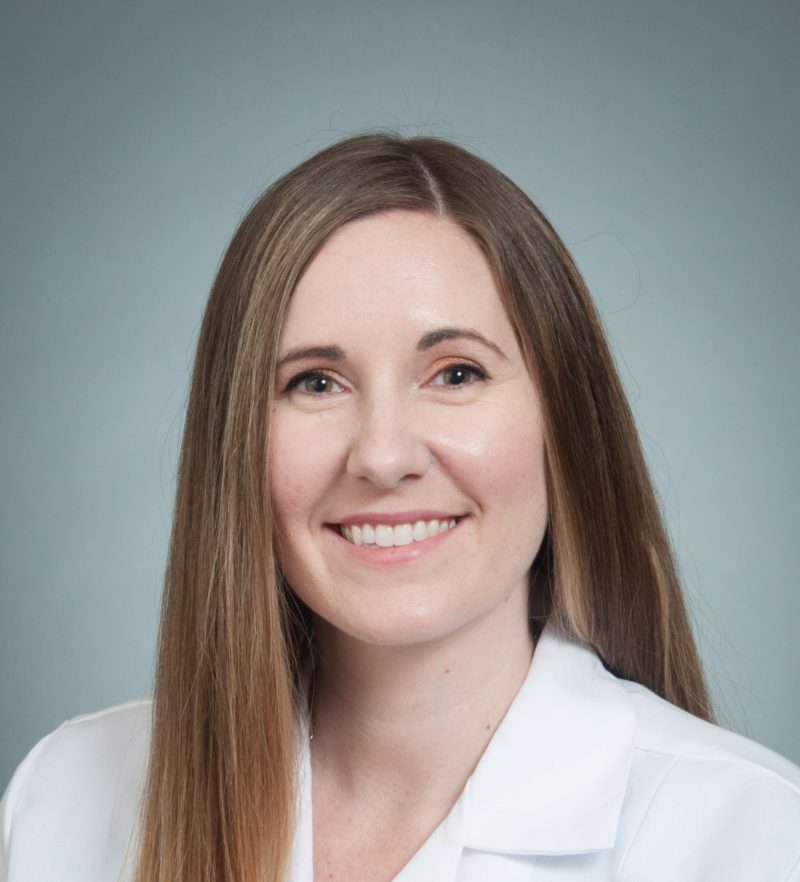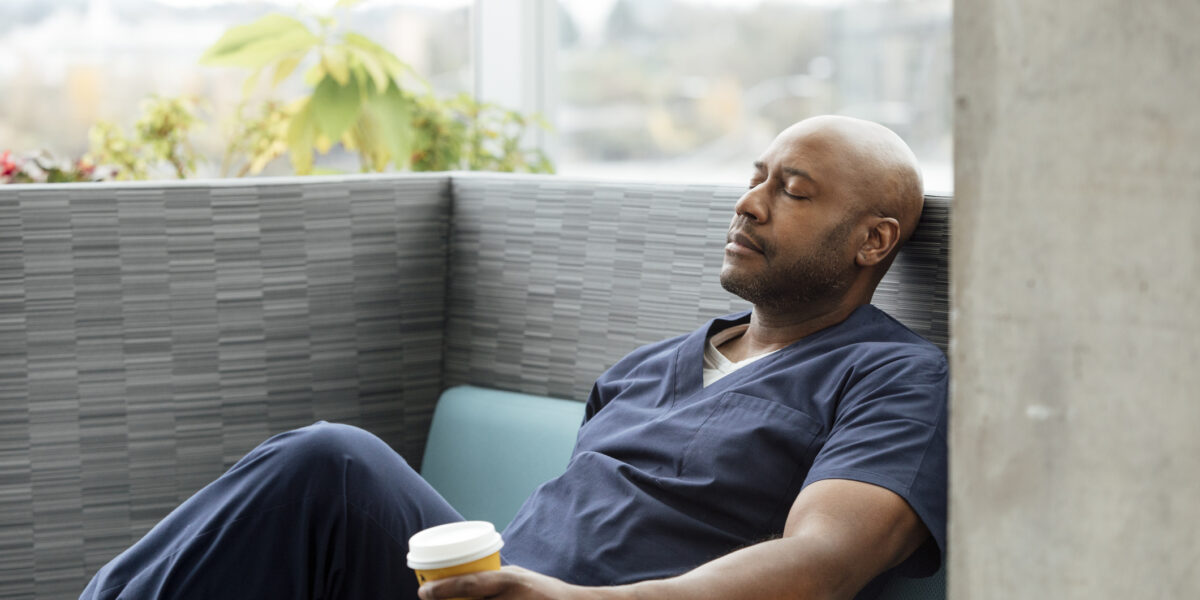
Health care work is stressful even under the best of circumstances. During the COVID-19 era – especially in its early days before vaccines and an understanding of how the virus spread – it has been traumatic for some.
Through its Center for WorkLife Wellbeing, ChristianaCare is a national leader in fostering health and wellness among caregivers. Two new resources co-developed by Stacey Boyer, Psy.D., director of Outpatient & Embedded Psychology Services at ChristianaCare, can support the well-being of health care workers in trying times.
First is a toolkit that gives organizations guidance on building team resilience and fostering mental and emotional well-being at the group level is now available through the American Medical Association. Boyer developed the toolkit with Kathryn Godfrey, Ph.D., of the Center for WorkLife Wellbeing and psychologist Vanessa Downing, Ph.D.
A specialist in the assessment and treatment of trauma and dissociation, Boyer and colleagues developed the CARE model to support the well-being of health care workers and help organizations build resilience among their teams.
Secondly, the Delaware Psychological Association is using a continuing education course developed at ChristianaCare to expand knowledge among mental health clinicians about the unique needs in health care. Boyer co-developed this educational module based on her research with Vanessa Downing, Ph.D.; Megan Call, Ph.D.; Samuel van Horne, Ph.D.; and Maureen Leffler, M.D.
What is collective trauma?
Teams and organizations that suffer collective trauma, such as the COVID-19 pandemic, can experience a loss of critical beliefs and values that help them work well together. Feelings of trust, connection, safety and meaning can all dissipate among team members, and rebuilding them can be a yearslong process.
Supporting the well-being of the team collectively and individually decreases burnout. It improves retention. It improves the culture and the care provided – the outcomes accrued. Good caregivers are going to stay with the organization, and the patients they serve are going to get better care.
How does the CARE model support teams’ mental health?
It’s important to note that trauma-informed care doesn’t focus only on providing care for a patient. It also focuses on modifying the environment to be more conducive to healing. It recognizes that healing often happens in the context of relationships, and so it looks at both the person needing care and the person providing the care. It takes into account the environments they’re in. The Center for WorkLife Wellbeing is very focused on people providing care and the environment they’re working in.
Supporting the well-being of the team collectively and individually decreases burnout.
In my graduate training, I was fortunate to read Judith Herman’s seminal book “Trauma and Recovery: The Aftermath of Violence – From Domestic Abuse to Political Terror.” It lays out a three-phase recovery model. With my colleagues in ChristianaCare’s Center for WorkLife Wellbeing, I adapted Dr. Herman’s model to assist health care workers.
I identified four phases and we worked together to outline specific interventions for each phase: CARE – for Cope, Acknowledge, Remember, Emerge – as the model’s name.
Organizations can serve as powerful protectors and sources of stability before, during and after times of adversity. The CARE model emphasizes building both organizational and personal resilience, and can help groups and teams recover and thrive.
- Cope: This phase, occurring during the crisis and immediately afterward, prioritizes the physical and psychological safety of individuals and teams.
- Acknowledge: Once crisis-response measures are in place and physical safety is assured, this phase publicly identifies that collective trauma is taking place and validates the variety of experiences and responses of those undergoing it.
- Remember: When the crisis is over or nearly over, or when the team is approaching a significant anniversary of it, this phase encourages the sharing of stories and feelings at individual and group levels. This can include stories of loss and feelings of grief.
- Emerge: Organizations enter this phase well after the trauma has dissipated and they have had the chance to process it and mourn. It involves looking to the future, perhaps with new aspirations, clearer goals, and evolving values and beliefs.
We shared the toolkit with the American Medical Association, which posted it as an open-source document on their website. That’s the best place to start. If anyone has further questions, they can ask the AMA to reach out to me.
Can the CARE model apply to non-health care organizations?
It might need to be adapted, as some of the recommendations we made were specific to health care. Largely, I think organizations outside health care could benefit from the CARE model. It could be helpful for many large groups to navigate challenging situations. There have been so many people impacted by COVID-19 collective trauma and other types of collective trauma that I’m hoping folks will take it and run with it.
How did the course in mental health care for health professionals come about?
Most licensed mental health professionals who are providing psychotherapy to health care workers were not trained in the medical culture. Even the most thoughtful, well-intentioned clinicians might say things that can feel hurtful or alienating to health care workers. For example, folks might be well intentioned and say, “When’s the last time you took a vacation?” And a physician or nurse might not be able to get coverage to do that due to staffing shortages. If you say that, the health care workers think, “You don’t understand me at all.”
Well-intentioned folks may ask, “When’s the last time you took a vacation?” If you say that, health care workers think, “You don’t understand me at all.”
Our hope in developing this training was that mental health professionals can increase their cultural competency when working with health care workers and learn some simple strategies to create a more health care worker-friendly practice.
In 2020 the Center for WorkLife Wellbeing, Nemours, and the University of Utah’s Resiliency Center won a $50,000 grant from the Delaware Health Sciences Alliance to do a mixed-method study of frontline caregivers and licensed mental health professionals who specialize in treating them.
We interviewed health care professionals about their experiences and their mental health needs, experts in health care worker well-being, and licensed mental health clinicians about the barriers they face and the things they’ve found helpful in treating health care professionals.
From there we used the funding to create a high-quality education module. It’s not just a webinar where you’re watching people present to you; it includes interactive components. And thanks to the grant, we’re able to offer the module for free. People who take the course get continuing education credits through the American Psychological Association at no cost. We are partnering with the Delaware Psychological Association to issue those continuing education credits.
What’s next?
I am hearing that other organizations are beginning to utilize the CARE model and incorporating it into their grant-funded research efforts. I am hopeful to see data emerge about its effectiveness and utility so that the model can continue to be refined, expanded and adapted to meet the needs of a variety of organizations.
My colleagues and I are actively working on manuscripts from our research that we hope will further guide organizations in developing well-being supports for health care workers.
Between these manuscripts, the CARE model and the continuing education training, I am hopeful that health care workers will be able to access supportive networks within and outside of the health system to address their understandable needs.
This offers the potential of a ripple effect: enhancing the health of organizations, the well-being of teams and individual workers and the care provided to the patients they serve.



